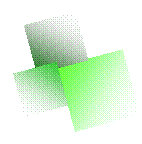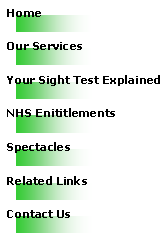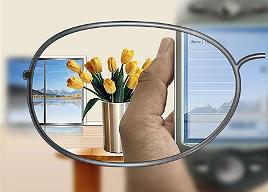|
Audley Mills opticians |



|
Complete Eye Care for the Whole Family. |


|
Varifocals are for those individuals who require separate prescriptions for different distances e.g. those who need one power for watching TV and a different strength for reading. The lenses have a gradual change in power from the top to the bottom, allowing you to see clearly at all distances with just one pair of spectacles. The lenses look just like normal ones - there are no visible dividing lines.
|
|
How they work? The lenses are positioned so that when you look straight ahead, you automatically look through the distance portion of the lens. To read, the gaze is lowered as normal, and your eyes will then automatically look through the reading zone. To look at something at arms length, you simply raise or lower your head slightly until the object comes into focus. After a while the process of finding the correct part of the lens for each viewing distance becomes automatic and you don’t have to think about it all.
Different Varifocal Designs Varifocals come in different designs and the variations between them can be quite dramatic. The dissimilarities are related to factors such as the size of the different areas allocated for reading, distance and intermediate as well as the amount of distortion in the lens. · Some have wider reading areas than others · Some have bigger distance portions than others. · Some have wider corridors - all varifocals have a central ‘corridor’ over which the power change occurs. On either side of this zone, the lens surface is not perfect and suffers from distortion. The wider the corridor the bigger the area of vision. · Some have more pronounced distortion - things are more out of focus when looking through the non-central part of the lens. · Some are compacted (the distance and reading portion are closer together) so that they can be put into smaller frames.
Getting used to them Varifocals do require some initial adaptation, but on the whole the success rate is very high at over 90%. Better success is achieved with the newest designs that have wider corridors and less edge distortion.
A small number of individuals however just don’t find them suitable and then either bifocals or separate pairs of reading and distance glasses will be suggested.
|

